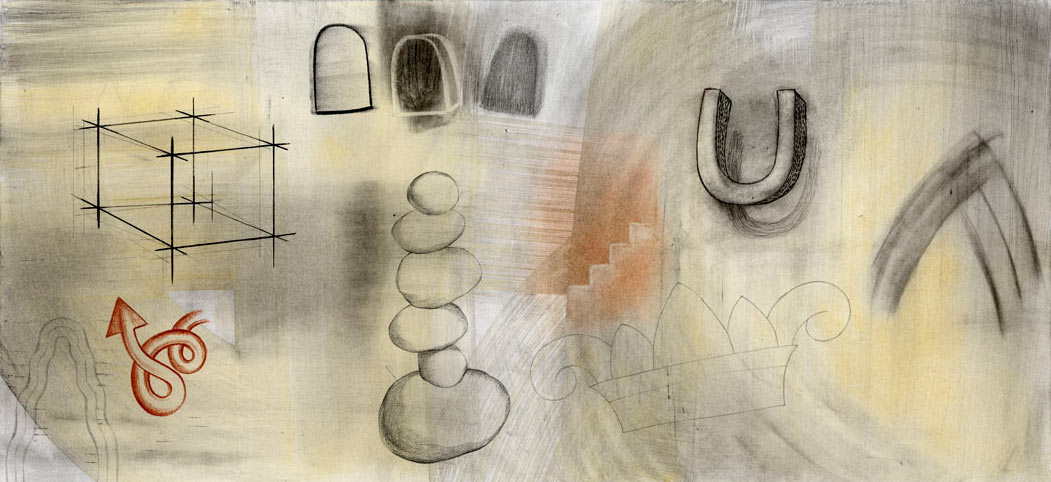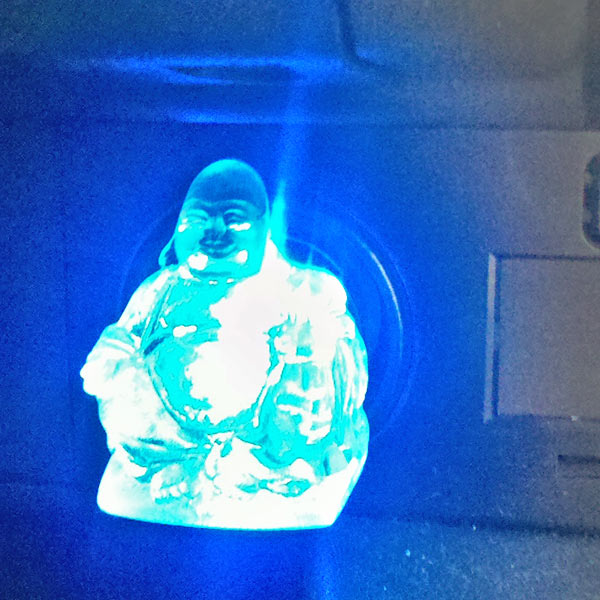
This week I am launching a new series of occasional interviews with artists working in the contemplative/devotional traditions. Many of these artists work within the rich iconography of Buddhism, and specifically with the image of the Buddha. Historically the Buddha is represented as a figure of serene composure, elegance and grace. The eyes look inward, closed or downward cast, the shoulders curve gently into hands held in perfect mudra. A careful ritualized mathematics guides the distance between folds in the Buddha’s robes and the size and placement of snails on his head. The surface is stone-hard or wood, impenetrable.
This is a statue, not a man–and certainly not a woman, although Greek influence gives his robes a lyrical sweep and his body is not the emaciated one of early more ascetic representations. Not just the province of practicing “Buddhists,” the Buddha image lives ubiquitously in the contemporary marketplace of imagery and ideas. The popular shorthand for “Buddhism” is the relinquishment of desire and a state of serene acceptance, exemplified by the immobile statue. The statue is an ideal. What happens when society fills its spiritual landscape with an image of an ideal rather than a real?
It sets up a struggle, a dichotomy, hazardous and blessed in equal measure. The essence of devotional art is an image and an ideal larger than the human capacity to realize. It is aspirational. And in aspiration is a keen and particular form of suffering: you never get there, you are always leaning towards, but never reaching. Modern life, at least as practiced in America, is about getting there: and it is about getting. There is grasping and a kind of avarice in that. As well, a valuable practical truth and wisdom. The democratic revolutions tumbled the monarchies: we can all consider ourselves kings, queens, or at least the head of our local precinct caucus. Darwin, driving a nail into holy hierarchies, established that we might be on a less than mystical trajectory from birth to death and nowhere does he tell us if the soul is an acquired or inherited trait. Given the melting ice caps we don’t know if we or the sutras will be here in 2020. It is only logical to say: why not now? Why not me? Why can’t I understand in my own terms, and right now, — quickly?
The membrane between the modern urgency to leap efficiently from aspiration to getting and a deeper, timeless and more thoughtful understanding is being explored by the artists, writers and other creators reinventing religious iconography on their own terms. Some of them continue in the lineage of traditional forms, repositioning them in modern environments. Others take the sly point of view, working in illustration and advertising, and others work from the ground up re-inventing the very iconographic forms, with their own personal and aesthetic mathematics. Irony is rare, and to me this is a welcome blessing. These artists are not afraid to wear their aspiration on their sleeve. They may risk condescension and accusations of blasphemy from the spiritual establishments, and incomprehension from the secular consumer, and yet they continue on.
As someone who has followed the Buddhist path– with some detours– for most of my adult life, I want to talk to these people. The Buddha image in particular has huge resonance for me. I have done and continue to do visual art, or what I think of more properly as contemplative practice, that incorporates the image of the Buddha. This practice has led me towards viewing my own art making, regardless of the subject, as an extension of contemplation, primarily motivated by a desire for insight, beauty and emotional ballast, and secondarily as an object in the marketplace. I look forward to visiting the studios and work of artists with a similar perspective, and to seeing the varieties of ways in which their practice takes form.
Please check back from time to see the latest artists interviewed in the category of “The Mystic Muse“, or subscribe to receive this blog in your mailbox.
My companion in travels, the plug-in-‘88 Toyota-cigarette-lighter-laughing-while-driving-Buddha. Factory made in a high-stress environment by card-carrying atheists, no doubt.
